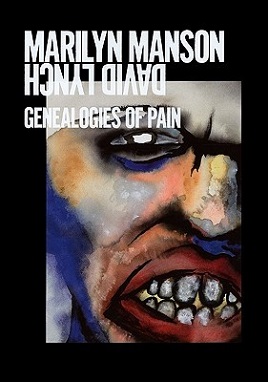Genealogies of Pain
Genealogies of Pain is an exploration into the multifaceted nature of pain, tracing its manifestations across various dimensions of human experience and cultural expression. This topic, while not directly corresponding to a single, well-defined field of study, intersects with disciplines such as psychology, philosophy, history, and art. The concept suggests a comprehensive examination of how pain, in its numerous forms, has been understood, represented, and managed throughout human history.
Overview[edit | edit source]
At its core, the genealogies of pain concept seeks to uncover the roots and branches of how pain impacts human life. This involves delving into the psychological aspects of pain, including its subjective experience and its effects on mental health. From a philosophical perspective, discussions might revolve around the meanings attributed to pain, its ethical implications, and its role in the human condition. The historical dimension examines the evolution of pain management and attitudes towards pain across different cultures and epochs. In the realm of art, pain is often a central theme, serving as a powerful source of inspiration and a means of expressing the inexpressible.
Psychological Perspectives[edit | edit source]
The study of pain within psychology focuses on understanding its mechanisms, how it is perceived by the brain, and the psychological factors that influence pain experience. This includes research into pain tolerance, the psychological effects of chronic pain, and the relationship between emotional and physical pain.
Philosophical Perspectives[edit | edit source]
Philosophy of pain explores the existential and ethical dimensions of pain. Philosophers have debated the nature of pain, its purpose, and the moral obligations we have towards those who suffer. This includes discussions on the problem of evil, the concept of suffering, and the philosophical debates surrounding euthanasia and pain relief.
Historical Perspectives[edit | edit source]
Historically, attitudes towards pain and practices for its management have varied greatly. Ancient civilizations had their own methods for dealing with pain, from herbal remedies to early forms of surgery. The history of pain also includes the development of anesthesia and the evolution of pain management techniques in the medical field.
Artistic Representations[edit | edit source]
Art has long been a medium through which the experience of pain is conveyed and contemplated. From the visceral depictions of physical agony in paintings and sculptures to the exploration of emotional torment in literature and music, art offers a profound insight into the human experience of pain.
Conclusion[edit | edit source]
The genealogies of pain represent a complex web of interrelated themes and disciplines, each contributing to a deeper understanding of pain's role in human life. By examining pain through various lenses, we can gain insights into its universal significance and the diverse ways in which it shapes our existence.
| Genealogies of Pain Resources | ||
|---|---|---|
|
| |
Navigation: Wellness - Encyclopedia - Health topics - Disease Index - Drugs - World Directory - Gray's Anatomy - Keto diet - Recipes
Search WikiMD
Ad.Tired of being Overweight? Try W8MD's physician weight loss program.
Semaglutide (Ozempic / Wegovy and Tirzepatide (Mounjaro / Zepbound) available.
Advertise on WikiMD
WikiMD is not a substitute for professional medical advice. See full disclaimer.
Credits:Most images are courtesy of Wikimedia commons, and templates Wikipedia, licensed under CC BY SA or similar.Contributors: Prab R. Tumpati, MD


